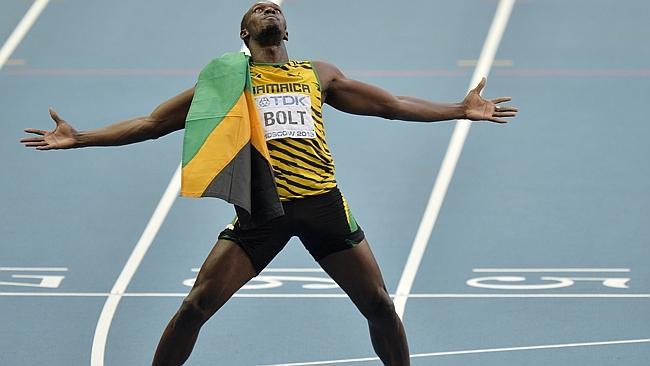Jamaicans' sprinting is all in the knees
SOME attribute Usain Bolt's speed to his extraordinary physique. Could it just be, though, that he has very symmetrical knees?

SOME attribute Usain Bolt's speed to his extraordinary physique. Others to his dedication and training. He himself credited his London Olympics victory to receiving an inspirational picture of his girlfriend's bottom. Could it just be, though, that he has very symmetrical knees?
A team of scientists believe the key to sprinting could be all in the similarity of your kneecaps.
Researchers from the University of Northumbia at Newcastle, England, came to the conclusion after investigating the knees of the finest sprinters in the world: the Jamaicans.
In 1996 they measured the width of the knees of 300 children aged about eight. A decade later they measured their knees again, then in 2010 they asked them to compete in a sprint.
Only 163 of the original sample stayed with the study until 2010, but those who did had more symmetrical knees - implying that knee symmetry is either an indicator of diligence or of a willingness to sprint. Given that, among those who did sprint, speed was also correlated with symmetry, the researchers believed the latter explanation.
"Jamaica is really disproportionately represented among the top-class sprinters around the world," John Manning said, adding that while more data was needed, there was an indication that the Jamaican children were more symmetric than their Caucasian counterparts.
"Children tend to be quite asymmetric because they are growing fast. These children were very symmetric indeed.
"If you are symmetric in your legs, your legs are going to be more efficient. Any tiny increases in efficiency are going to translate into an effect in running."
Professor Manning, however, has a different theory.
"That is the least interesting explanation and I don't think the right one," he said. "The other explanation is the body has genetic instructions to develop symmetrically. When you think about it though, it is very difficult for the body to develop symmetrically. How does it do it? We don't know. But usually there is a millimetre or so difference. So this trait is a test of the viability of genes."
If this theory is correct, then the fact that it is knees that are similar is almost irrelevant. Indeed, in other mammals Professor Manning has found symmetry in areas wholly unconnected to motion correlated with fitness.
"Some while ago I looked at racehorses. I found that asymmetry of the head was predictive of running speed."
He and his team intend to follow up their work by looking at professional sprinters. Will that include Usain Bolt, who generally insists on appearance fees bigger than most universities' annual research budgets?
"Let's just say there are negotiations," Professor Manning said.
THE TIMES


